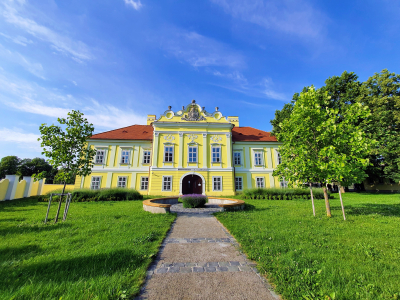In 1753 on behalf of Padányi Biró Márton, Bishop of Veszprém a two-storey spacious mansion, the later Yellow Mansion was built, to which a large estate belonged, for his brother Biró István in Pókatelek district.
"For our brother István (...) we built in Pókatelek (...) a decent and very spacious residence, adorned from outside with St. Márton (St. Martin) the Bishop and Confessor´s effigy carved in stone and other embellishments and items." - writes the bishop in his will about the building.
After the death of Biró István, the Kondé family from Pókatelek got hold of the valuable manor and its endowments who reshaped it (the pediment was ornamented with the coat of arms of Kondé family along with the monumental stone turkey statue above) in the beginning of the 19th century according to their own taste. They owned the castle for about sixty years which was for a long time the only two-storey house of the town.
In 1858 Miklós Wahlberg, university professor in Vienna, purched the building from the Kondé family and leased it out. The mansion was inherited by Wahlberg´s daughter and sold by her in 1910 to the Dukesz-Herzog company residing in Hlohovec, who purchased it for economic goals. The Hungarian military administration was housed here in years 1938-1944. In 1944 and 1945 the German, later the Russian military commands arranged their seats here. Shortly thereafter, the Czechoslovak military authorities took over the building. Since 1953, the Land Office resided in the Yellow Mansion until 1972 - when the Rye Island Museum moved here from the Bacsák family’s White Mansion with space granted for permanent exhibitions and expert research. In 1977, the Mansion’s main building was renovated, which in the museum's permanent exhibition halls have been located until present.










